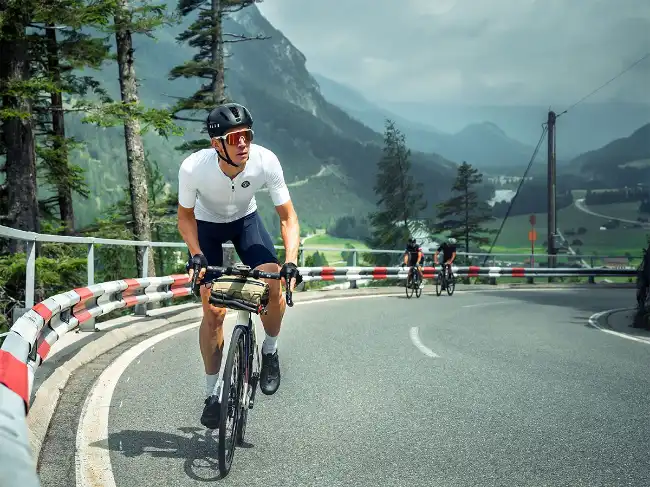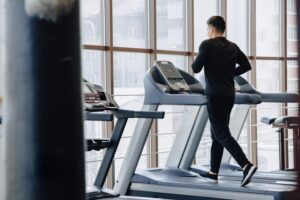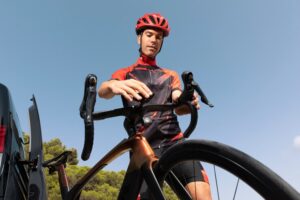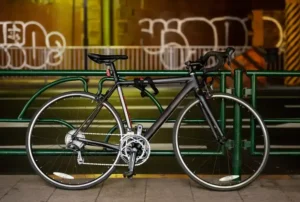Cycling training and your goal to be a better climber doesn’t have to end just because it’s too miserable to ride outside. In this series, we discuss some proven ways to be a better climber using your indoor trainer and power meter. I’m sharing what I’ve learned about cycling training, specifically for climbing rides, from 6 time U.S. National Champion Arnie Baker, MD. The emphasis is on training indoors through the winter months.
In part 1, we discussed some of the basic set up for indoor training, along with how to account for mileage, etc. In Part 2, we’ve covered the importance of breathing, rhythm and focus on long climbs. Today, we will address a few last pieces before we dig into the nuts and bolts of setting up a training program.
The first principle for today is gear selection. This may sound remedial but it definitely requires attention, especially when the terrain transitions quickly from a descent to steep climb in a short amount of road. The first few things to think about are your muscle type and leg strength. These are huge factors when deciding to spin up a climb at a relatively high cadence (80-90+rpm), or to push a big gear at a low cadence (50+/- rpm). Your power meter displays cadence so you can see what works best for you. iBike Isaac ride analysis software is the perfect tool to analyze your climbs at home.
If you’re a newer rider, do yourself (and your kneecaps) a favor and select an easy gear. Too many newer riders want to prove their machismo by pushing 53×12 up a grade and completely blowing up towards the top. Conversely, if you’re spinning like crazy and not going anywhere, that’s not helping either. Find a gear that works for you and don’t worry about the person next to you. We each have a different climbing rhythm.
Despite your gear selection, Arnie always told us to shift into an easy gear early and build speed and tension as you approach the summit. I typically approach a long climb in an easy gear and may slip off the pace a bit. In the middle to end segments of the climb, I’ve shifted up a few gears and have picked up speed and momentum to finish strong.
It’s not just the gear selection but your wattage and level of effort that should be conservative at the base of the climb. I’ve learned this the hard way after years of starting off too fast, and completely bonking before the top. It’s so embarrassing to take off at the base like a “cool guy” only to get spanked by everyone towards the top. When you’re out of gas, there’s nothing you can do besides watch everyone pass you by.
Besides spinning or mashing big gears up climbs, there’s sitting or standing and saddle position to think about. Sitting is definitely the most efficient way to climb and helps keep your heart rate in check. However, some lighter riders can stand and seemingly “run” up the mountain. Personally, I do a little of both but mostly climb seated. I stand to keep my legs fresh or pop up out of the saddle on steep sections. I also like to slide forward, towards the nose or “rivet” of the saddle and backwards to hang my tail off a little to engage more gluteal muscle. All this movement is an effort to keep fresh and utilize different muscle groups. This is something to play around with to see what positions work well for you.
Lastly, when it comes to quick transitions from descending to climbing, I’ve found that shifting down a few gears at the end, while I’m still descending, puts me in a better position. If you’re in the right gear as soon as the road turns up, then there’s no clanking and grinding of your cassette. It makes for a quicker and smoother transition, while keeping all the momentum from the descent. Starting easy and building, still definitely applies.
Stay tuned for more on this series. . .
Do you have questions regarding nutrition, weight loss, or training? I’d love to help. Please e-mail iBikeBlog. Thank you!




